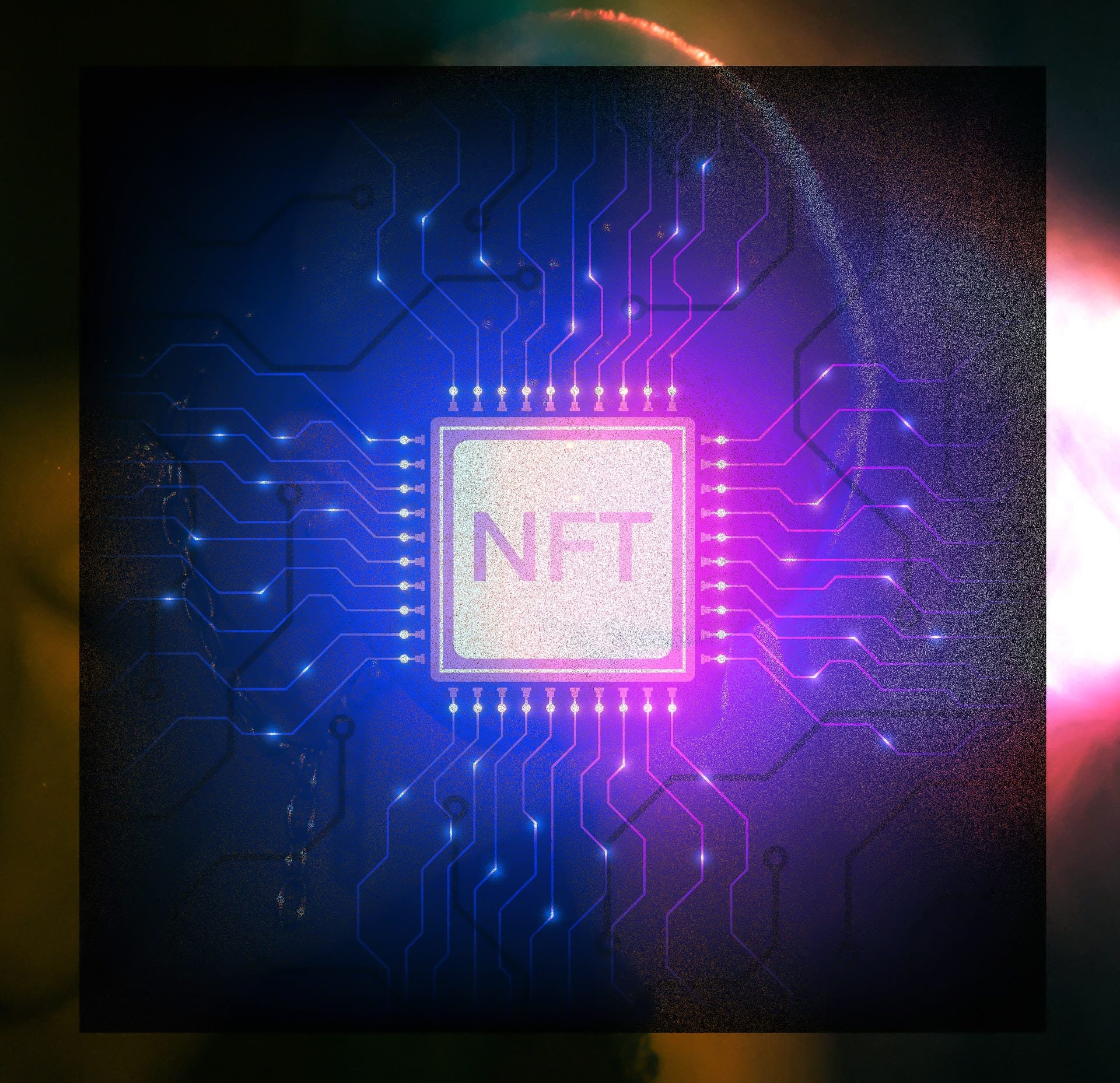The concept of the collectible is fundamental to the human spirit. Children start collecting things before they can walk. The fascination with collecting only increases as we get older. For most, a collection is fairly simple. Baseball cards, luxury cars, toys, comic books, art, merit badges; sure; but people also collect paychecks, royalties, credits and ratings. A collection can in fact be just about anything. It is no wonder than that seemingly innocent non-fungible tokens, each known as an “NFT,” present one of the most confusing concepts delivered by distributed ledger technology. In fact, misunderstanding of how NFTs function, what they represent and how they are legally characterized is a dangerous trap awaiting the unwary.
What is an NFT? Think of it as a digital VIN (vehicle identification number) where the car can be anything.
Technically, an NFT is a discrete information set written into a blockchain by way of standardized software code to represent an asset, and to allow transfer of that asset subject to a predetermined set of rules. The asset associated with the NFT can be anything and could be stored in the NFT itself, stored electronically somewhere else, or a physical tangible asset. The NFT will usually include the information required for the owner to locate the asset and avail themselves of the rights evidenced by ownership of the NFT. The NFT cannot be divided and is unique and immutable. Although each NFT is unique, that doesn’t mean that many unique NFTs can’t be associated with identical (or even the same) assets. Ownership of an NFT may represent ownership of some or all of the legal rights associated with the asset to which it is associated. If an NFT is known to be validly associated with an authentic asset, then ownership of that NFT can be authenticated on the applicable blockchain (allowing for a more liquid and transparent marketplace for that asset). Simple right?
The Secret is That There is no Spoon (spoken by the child bending spoons in “The Matrix”)
For all practical purposes, an NFT is what it represents. It’s the same thing as a piece of paper. It could be blank, it could be a baseball card, it could be a share of stock, it could be title to an asset (art, real property, a gold bar), it could be pretty much anything. No surprise than that the attempt to answer questions like “How do you regulate NFTs” miss the whole point. Might as well ask how you regulate a piece of paper. The result of this metaphysics is that the question of NFT regulation is really about classification of the rights and assets associated with that NFT.

So Much More Than a Piece of Paper: The End of the First Sale Doctrine.
The first sale doctrine comes from US copyright law. In short, it is the principal that once a consumer purchases a copy of a work, that purchaser owns that copy outright. Notably, they can resell it[1] to anyone they want and the original author does not have a right to any of the proceeds of the second sale and all subsequent sales. That is the law, and the law is not changing, but NFTs allow a work around. The smart contract that controls the sale and assignment of the NFT is immutably defined to preset rules. One of those rules can be that on each sale following the first sale, one or more payments from the proceeds of the subsequent sale are automatically paid to predetermined accounts. Previously the practical limitations of physical copies of works, and the fungible nature of most digital files acted as a barrier to setting up royalties on secondary sales of individual copies of a work. Moreover, the legacy institutions involved in content distribution were unlikely to try to change the existing system. Now, with NFTs, however, creators and other sellers of NFTs have taken matters into their own hands by smart contract. There is no barrier to them doing so. Because of this, NFTs mark a sea change in content distribution towards a creator controlled ecosystem.
Tulip Bulbs . . . Again – Common NFT Use Cases and Why Trouble is Brewin’
Almost as integral to human nature as the survival instinct is the drive to obtain value. We want to make money. We want it now, and we want it with little effort. Get rich quick schemes abound through history. Focusing on recent history, 2017 was the year of the initial coin offering; the ICO. Token projects raised hundreds of millions of dollars in minutes. Early adopters were followed by profiteers and then by the general population. A general population completely unschooled in investing in digital assets. If that sounds like the stock market in 1929, it is because the same fundamentals are at play. That is why we have the Securities Act of 1933 (the ’33 Act”).
The Securities Act of 1933 has two basic objectives:
Require that investors receive financial and other significant information concerning securities being offered for public sale; and
Prohibit deceit, misrepresentations and other fraud in the sale of securities.
No wonder that the Securities and Exchange Commission (“SEC”) decided to squash the ICO boom.
The SEC only has jurisdiction in sales of “securities.” Is an NFT a security?
In short . . . maybe. The United States Supreme Court, in the 1946 case, SEC v. W.J. Howey Co., 328 U.S. 293, 301 (1946), laid out elements for identification of “investment contracts.” “Investment Contract” being the term that the ’33 Act includes as a catch-all for things that feel like securities, but don’t fit neatly into the objective definitions of things like stocks and bonds. The four element test is as follows: an “investment contract” is an investment of money in a common enterprise with a reasonable expectation of profits to be derived ‘solely’ from the entrepreneurial or managerial efforts of others.[2] Unpacking that:
As long as someone is purchasing the NFT, we have an investment (the SEC interprets “investment to be anything of value, not just money; it is difficult to distribute a digital asset without some type of associated minor investment by the recipient);
The common enterprise element is satisfied if the likely return on an investment is tied to the returns of the promoters who first sold the investment; or tied to others who made the same investment in a pool structure. This is a very slippery area. If you think of an NFT as a single non-fungible token (representing a piece of art, for example), it is tempting to rule out the possibility of common enterprise. That said, if the NFT in question is one in a series of two hundred NFTs that each provide rights to the same (or an identical) asset, it starts to look more like a common enterprise. If the original author has a financial incentive to grow secondary sales of the NFT (since they may get a royalty on each sale from an associated smart contract), now the initial seller has a financial interest in fostering a rising liquid market in their NFTs. This can also be the case with respect to a publisher of NFTs using a single brand, even if the individual NFTs are all different. In short, it’s a case by case analysis. Of course, if you are selling NFTs as collector items, you might not pay attention to this factor. It could be a big mistake.
The “reasonable” expectation of profits. In short, would a reasonable person purchasing an NFT believe that they were purchasing it as a vehicle for a financial return, as opposed to any other reason; being a collector of digital art, for instance. This is a subjective facts and circumstances test (SEC code for no clear guidance). That said, it should be clear that if the sales pitch for an NFT is based upon how much it is going to go up in value, or how much prior NFTs went up in value then almost certainly, the purchaser will have a reasonable expectation that it will go up in value. There are other facts that can make a difference, including various sales limitations and liquidity controls, along with other terms that push the prominence of a non-financial use case (like being a collectible or providing access to an activity).
The courts have clarified that derived “solely” from the efforts of others really means something closer to based more upon the efforts of others than upon the purchaser’s own efforts. In this case, if the initial seller of an NFT subsequently takes action to keep visibility of the public markets on that NFT (or others like it), it will almost certainly be enough to satisfy this prong. Given the nature of the markets and the fact that a seller of an NFT will typically sell subsequent NFTs, we expect the SEC will almost always find this element to be present.
If the sale of an NFT is an “investment contract”, and therefore a sale of a “security,” the seller (and potentially a commercial reseller) would need to either publically register the sale of the NFT or have a valid exemption to such registration. Registering the sale is likely a non-starter. That is the equivalent of an IPO, not only an extremely expensive process, but also not at all suited to the reality that most NFTs are intended to be collectibles, not securities. That leaves the exemptions to the securities act. Things like the Rule 506 private placement exemption, which would allow a sale to an accredited investor under certain circumstances. Although more easily considered than public registration, all of the registration exemptions are designed for classic securities. Would we really want sales of collectibles limited to transactions on a platform that verifies accredited investor status?
The short version: be extremely careful about the manner of sale of an NFT. Even if the NFT, itself is a “collectible,” selling it by reference to financial gain, and continually conditioning the public markets for NFT resales to remain liquid in respect of that NFT and others related to it could put an NFT seller in hot water with the SEC.
What do you Mean It’s the Right NFT but the Wrong Asset?
Just as a piece of paper can be a forgery, the existence of an NFT does not automatically mean that the asset associated with that NFT is what it purports to be. For example, the digital art represented by an NFT may be the one authentic copy, but that doesn’t mean someone cannot find a way to copy the digital art and associate it with a different NFT. The second NFT would not be authentic, but the digital art it represents might be identical. Whether a buyer cares or not is entirely up to them and the circumstances. Likewise NFTs providing ownership to physical assets are more likely to be tied to something inauthentic than they are to be attempts to fake an authentic NFT (which is virtually impossible at this time).
Derivative NFTs Have Must Include Underlying Rights
Wouldn’t it be great to have NFT’s associated with clips of classic movie scenes. Only problem is that the intellectual property underlying a typical Hollywood movie is a rat’s nest of intertwined rights and royalty obligations. Production studios, musicians, actors, guilds and unions to name a few, may all have rights to revenue derived from that movie clip. Quite possibly the rights to allow someone to put the clip on an NFT don’t even exist.[3] The owners of those rights can get very aggressive about preventing infringement. Of course, once an NFT is out in the world, there is a real question about how to get it back. The same is true about pirated copies of movies, but the difference is that the issuer of the NFT may still receive an ill gotten royalty on their infringing NFT. Whether creating or purchasing an NFT that includes intellectual property derivative of anything else, checking to make sure that all the proper rights are included is critical.
[1] They cannot copy it. The first sale doctrine only applies to the actual copy first sold.
[2] The “Howey Test” is the subject of a multitude of articles and scholarly works, not to mention more than a few court opinions and some SEC guidance. Interested readers will have no trouble finding more legal analysis. For purposes of this practical analysis of the application of securities law to NFTs, the author will make some conclusory statements to illustrate how seemingly innocuous activities can lead to major issues.




